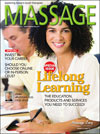Personal Responsibility and Being Reiki
Hello 2009, goodbye 2008 and good riddance! Not the most uplifting start to a new year but nevertheless it is the phrase I've heard more than any other over the festive season. That and 'pass the Christmas brandy' anyway - maybe the two are linked! 2008 spiralled rapidly downwards for many - personally I've known people facing tragic losses of friends and relatives, houses ruined in hurricanes and tornados and then there's the general malaise of the economy. We will start 2009 with a new President who has promised change - a coming together of a previously divided nation but I wonder whether the message going forward should really be about personal responsibility. It seems practically everyone wants a bailout at the moment but in the long run it strikes me that the only way to really change is not to call on someone else to do it for us but to take on the challenge ourselves.
It's a thought that's been building in my Reiki practice too. The catalyst was a Shinpiden class I took back in October taught by Frans Stiene of the Australia based International House of Reiki. The key idea was of Reiki as something we are, not something external.
It is clear to me that there is a human tendency to look outside ourselves - we pray to a God to make things better, we expect the government to fix the country, we look for our handsome prince so we can live happily ever after - we first look outside for a bailout. In Reiki this tendency seems to have manifested itself in some views of the attunement and in the use of the symbols. I've read many times the attunement being described as the student being opened up to the flow of Reiki energy from a God consciousness and this has never felt very empowering. Not really in line with the central idea that the system of Reiki is about self healing - it would be more like god consciousness healing. With the symbols - they've been talked about as being what activates the energy - so are we now symbol healing?
Research into what have been claimed to be Usui's earliest teachings moves away from these tendencies. It is difficult or even impossible to know for sure how accurate the information available on these teachings is and its thought more will come out in the future. But the effect on me personally was immediate. That was because once I got to the idea that I am Reiki then I could really get down to the business of being Reiki in my everyday life using the tools of the precepts and the meditations. I didn't need to need to spend so much time trying to get Reiki from somewhere else. It made me look at how much effort the auto makers have put into trying to get money from the Government - if only they had spent as much time beforehand trying to build up their reserves by themselves. Similar for the banks.
So going into 2009 my resolution will be to personally respond to the situation by practising being Reiki. At times I'm sure it will seem much easier to ask for a bailout, then if it didn't work I could just say ''well the bailout wasn't good enough or large enough or well designed enough''. But in the end I know that only I can look after my own happiness because only I know what that is and that's an incredibly positive thought. There is an underlying eek factor - but then just for today I won’t worry about that. And if I remember to be compassionate with myself and others I can keep taking new positive steps and hopefully at the end of 2009 we'll all be saying 'wow what a great year that was!'
Heather Alexander has been working as a reporter for BBC News for almost 10 years covering stories for TV, radio and online all over the world - from the UK, to Australia, to Africa. It was on a trip to Thailand in 2000 that she first discovered Reiki. A fellow traveller did a session for her on a table in a restaurant on a remote island. It was 5 years before she sought out her own teacher but she's not looked back keeping up practice of this wonderful system with teachers in London and in New York. She is now starting to teach Reiki herself. You can contact her at hj_alexander@hotmail.com.
































2 Comments:
From Pamela Miles:
Thank you, Heather, for your beautifully written and inspiring article.
The critical piece that we are Reiki is usually lost in translation. Although the essentially non-dual interconnectedness of all reality is implicit in Japanese culture, this understanding does not exist in mainstream European-based culture. Reiki initiations and practice do not give us something that is outside us; rather, they open our awareness to our own essential being.
Once we understand Reiki in this way, we can see that Mrs. Takata also understood. Perhaps she felt constrained by the times from expressing it more explicitly, sensing that even after the animosity of World War II began to subside, such an Asian approach was more than the public could absorb. And because Mrs. Takata stressed the importance of disciplined daily self-treatment, she knew that in time, her students would come to understand the essential non-dual nature of reality from within (whether they would ever conceptualize it that way is another matter).
The current time is very different than the time in which Mrs. Takata so capably brought Reiki out of Japan. We can express such concepts as non-dual reality openly without fear of being persecuted (although some may vehemently disagree with us). Because much contemporary Reiki training does not stress the importance of consistent daily practice, it may be a service to be more explicit about how profound the fruit of Reiki practice can be.
We are Reiki. That is neither magic nor entitlement, but rather responsibility. Reiki initiation empowers us to practice self-treatment, and thereby reconnect with our essence. When we practice self-treatment every day, we are more able to honor the Precepts and live Reiki mindfully and responsibly throughout the rest of our day. What a simple and effective way to address not only our own suffering, but also that of our struggling world.
From Bronwen and Frans Stiene:
Thank you Heather and Pamela for the stimulating discussions!
There is no disputing that Hawayo Takata capably brought teachings across to the USA from Japan.
What exactly were these teachings and what was her influence upon them? And lastly, did these teachings focus on non-duality in any guise?
Firstly, were these teachings those of Mikao Usui? In part, yes. Though teachers in Japan, like Hyakuten Inamoto, believe that what Takata taught might better be called Hayashi's Reiki. Chujiro Hayashi, you might well say, 'revolutionised' the teachings – bringing them into a more treatment based arena in accordance with his own interests and education. Whether this practice of Hayashi focussed on non-duality it is unknown. It is known that he moved away from the early Reiki society, the Usui Reiki Ryoho Gakkai, and focussed on his own unique Reiki teachings which included treating people at a formal clinic. Today many also believe that he is the author of the more medicalised treatment manuals that exist from those early days. This supports the understanding that his direction was new and different to that of his teacher.
To gain a clearer idea of what some of the differences were between Hayashi's teachings and those of Usui we can listen to Takata. A student of hers, John Harvey Gray, wrote a book called Hand to Hand which includes information about the tapes he holds of Takata teaching. He writes that in the tapes she speaks of a trip she took back to Japan where she met with Japanese Reiki practitioners. What they practiced, she explained, "was highly complex, required years of training and was closely intertwined with religious practices". She had never said this of Hayashi's teachings and her response to these "Japanese citizens" she met indicates that the practices she had witnessed were different to what she had known. John Harvey Gray also writes that Takata often claimed to have "simplified" the teachings. This tells us two things: Usui's teachings were different from what she had initially studied and that she had taken Hayashi's teachings and simplified them further.
Did Takata, then, teach the concept of non-duality or even understand it's implicitness within the system? There are no known records of Takata talking or writing specifically about non-duality. As Pamela stated last week, a major reason for Takata to have simplified the teachings may have been that she felt constrained by the negative cultural sentiments that existed in her lifetime due to the Second World War. This may have initially posed an issue, yet this reasoning loses weight when faced with the records of other spiritual teachers in the West during the mid 1900s teaching Asian oriented concepts such as non-duality. These were popular teachers like Thomas Merton (1915-1968) and the French philosopher Omraam Mikhael Aivanhov (1900-1986). Even Zen master Shunryu Suzuki was teaching in the USA from 1959 till 1971. So there was definitely interest in non-duality and meditation during this era.
In modern times, non-duality and Oneness have become household names with numerous websites devoted solely to these subjects. In this process they appear to have become mere terms and, consequently, oversimplified. It is understood that true non-duality is where you reach a space of directly experiencing the universe as it is, or, as it is said in many Eastern philosophies, you have a direct experience of emptiness. To know this experientially takes many, many years of dedication and personal practice, perhaps a lifetime for some – or longer if that is possible.
No matter which spiritual practice it is that we are discussing, spiritual practices have always included large doses of meditation. Therefore, it is understandable that the system of Reiki in Japan traditionally included meditations such as hatsurei ho as one of its foundation practices.
Through research we have pinpointed 5 main elements that form the system of Reiki. They are precepts, hands-on healing, symbols and mantras, meditations/techniques, and attunements/reiju. It is these elements together that create the system which ultimately supports its practitioners to move into that space of Oneness or non-duality... after many, many years of dedication and personal practice – and then to move on to help others if they so wish.
On reflection, the hands-on healing element of the system may initially have been only for use on others, evolving from the physical ritual of attunement/reiju. There are correlations, for example, between the hand positions of the reiju and Hayashi's head positions in his manual. Healing with the hands was popular amongt the naval officers (of which Hayashi was one) as an alternate form of 'first aid' and was taught to them as such. The meditative practices on the other hand were very clearly utilised for spiritual self-development. Kaiji Tomita, a student of Usui, taught in his 1933 book of a 5-day plan. This appeared to be his foundation practise and its aim was to unify and purify the mind. The practise was simply hatsurei ho and Japanese waka practised everyday for ½ an hour over 5 days. It was this practice that then enabled the practitioner to go and help others with hands-on healing.
It is, therefore, possible to see that the element of hands-on healing is not a major self-practise technique, but, rather, something that a Reiki practitioner can do to help others after working on oneself with traditional Japanese Reiki meditation practices. This is not to say that hands-on healing for the self is is not beneficial. It has come to be a tool which you can use to support your own healing practice in the same way that you would help others. But to go deeper into your own spiritual practice and to sustain your healing practice, other elements of the system of Reiki were provided. It is the meditation practices coupled with the system's other elements of precept work, symbol and mantra work at Level II and III, and the attunement/reiju that develop the practitioner's growth toward non-duality.
All this talk of Oneness and non-duality still hasn't addressed the issue as to why it is so important that a Reiki practitioner/teacher work with the system's elements to reach this space. When a Reiki practitioner/teacher reaches a non-dual space, then he/she realizes that the 'I' has disappeared. It is at this stage that he/she also realizes that there is no giver, receiver or gift during an attunement/reiju or Reiki treatment.
At this moment in time, you, the practitioner or teacher, are at your most compassionate as you expect nothing for yourself from the practice.
And it is compassion (as described in the Reiki precepts) that grows through the practice of the system of Reiki. If compassion is not a result of the teachings, then we are not practicing the teachings properly. As in all spiritual practices, non-duality and compassion can be found to be holding hands, gently supporting each other with pure love.
We have written some articles on these subjects which you might find interesting including
It's Raining Rei
Breaking the Reiki Code
Christ prayed that all men might become One as He was one with His Father, in the Unity of the Holy Spirit. Therefore when you and I become what we are really meant to be, we will discover not only that we love one another perfectly but that we are both living in Christ and Christ in us, and we are all one Christ. (Thomas Merton)
Cheers,
Frans and Bronwen Stiene of the international House of Reiki
Post a Comment
<< Home